In the Soviet past, Gagra was one of the most popular resorts in Abkhazia, it was considered quite prestigious to relax here - every citizen of a large country secretly dreamed of getting a ticket to one of the local sanatoriums. The city began to purposefully turn into a resort area with the active assistance of Prince A.P. Oldenburg, who did a lot for the improvement of the Black Sea coast.
Starting in the 1990s, Gagra gradually fell into decay due to wars, conflicts, lack of funding and general instability, although tourists, against all odds, continued to come to this wonderful city, albeit in much smaller numbers. Today Gagra is a legacy of a bygone era with a slight touch of nostalgia, quiet beaches, magnificent parks and picturesque natural attractions.
What to see and where to go in Gagra?
The most interesting and beautiful places for walking. Photos and a short description.
Gagra colonnade
This is one of the most famous sights not only of the city, but of the whole of Abkhazia. It is located next to Seaside Park. Tourists entering the country from Sochi, first of all pay attention to this building, as it is clearly visible from the road. The colonnade was erected in the 1950s. It is a structure of arched spans and porticos surrounded by lush tropical vegetation.
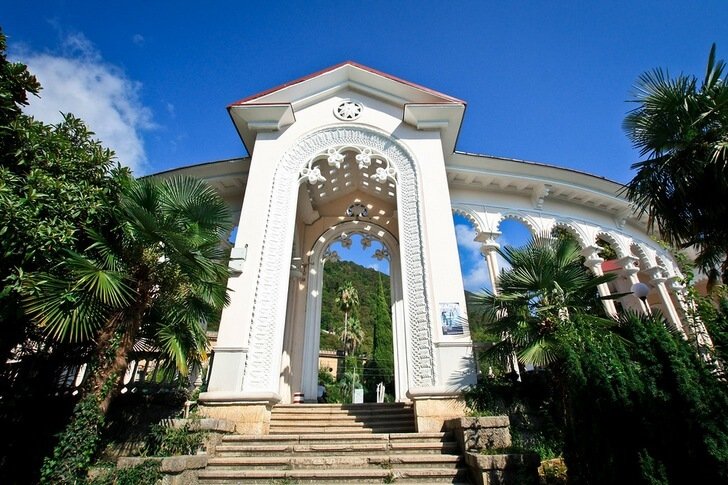
seaside park
The park was founded at the beginning of the 20th century. Throughout the century, it has been a favorite place for guests of the city - walking along the alleys, they inhaled the fresh smell of pine needles mixed with the salty sea breeze, and admired exotic plants brought here from different parts of the world. The park stretches for several kilometers along the coast, its area is more than 14 hectares. One of the most striking compositions is the sculpture-fountain "Sagittarius", located in the middle of the pond: the figure of a young man with a stretched bow, from which a stream of water escapes.
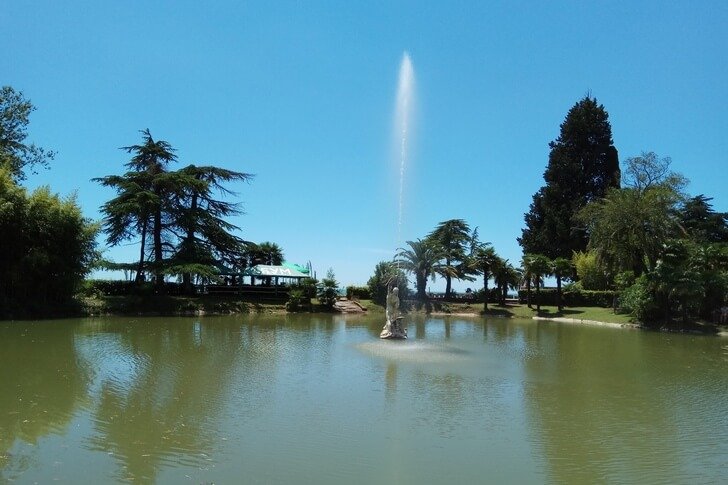
The beaches of Gagra
The beaches of Gagra stretch along the coast for several tens of kilometers. All swimming areas are open for free access, even those located at boarding houses. Conventionally, they are divided into the beaches of New and Old Gagra: the former have a more developed infrastructure and more people, the latter, located closer to the border, are perfect for tourists looking for a relaxing holiday. The entire coast is covered with small and large pebbles.
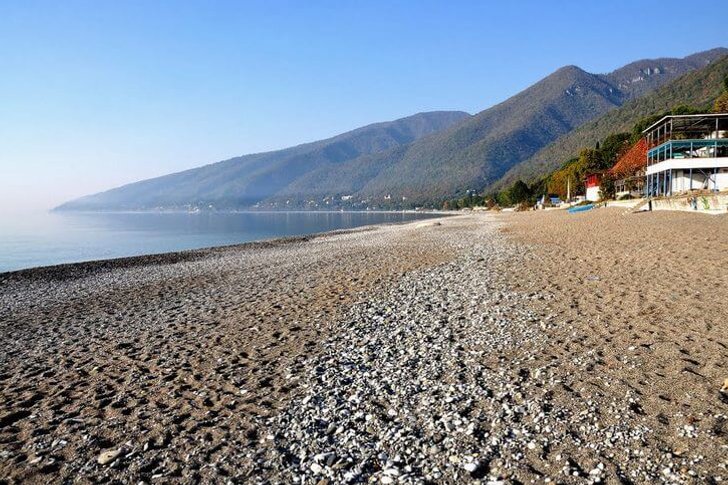
Gagra water park
Like any self-respecting seaside resort, Gagra has its own water park of a fairly decent size. On the territory there are many attractions-slides of different difficulty levels, seven swimming pools, a food court area where you can order dishes of Abkhazian cuisine in restaurants. In the summer season, the water park organizes night sessions with discos and entertainment that continues until the morning.
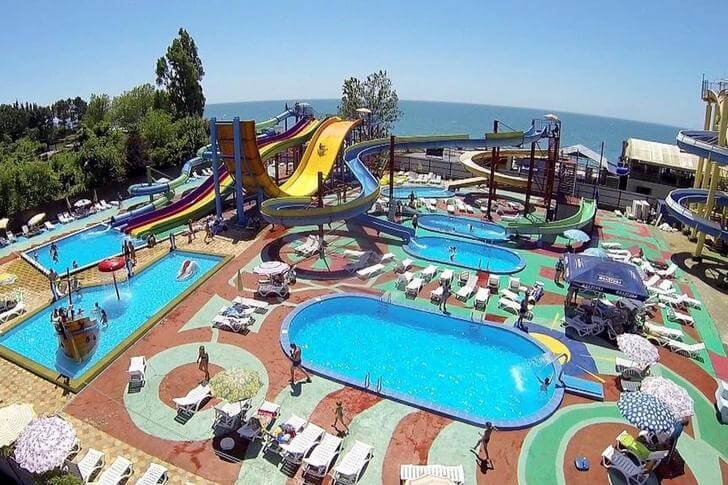
Castle of the Prince of Oldenburg
The castle-residence of Prince A.P. Oldenburg - a relative of the emperor, a public figure who, during the time of Nicholas II, was engaged in the improvement of the Black Sea coast. The building was built in Art Nouveau style in 1902. It is located in the bowels of the picturesque Seaside Park. In Soviet times, the Chaika boarding house was located in the castle. After the collapse of the USSR, the building was looted, and it fell into disrepair. All that a tourist can see today is the remnants of former luxury.
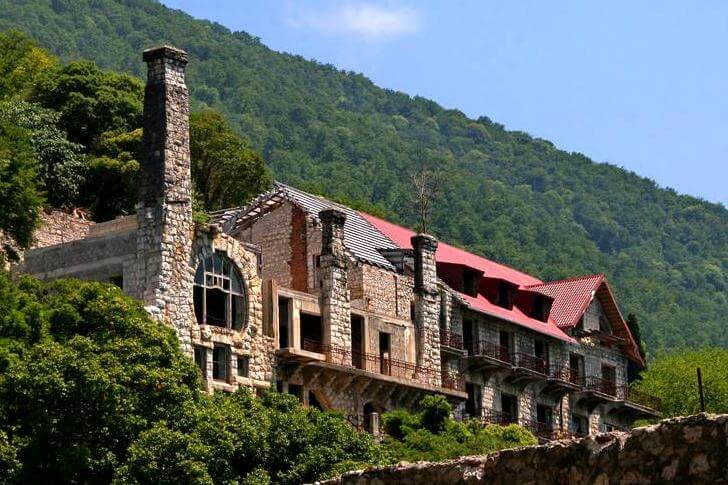
Restaurant "Gagripsh"
Gagripsh has been welcoming guests since the beginning of the 20th century. Immediately after the opening, the restaurant became a symbolic place of Gagra, it was visited by many famous personalities: Nicholas II, I. A. Bunin, F. I. Chaliapin, and later - I. V. Stalin. We can say that it was from this institution that the history of the city as a popular resort began. "Gagripsh" means chic historical interiors, excellent cuisine, wide panoramic windows overlooking the Seaside Park, and a special atmosphere.
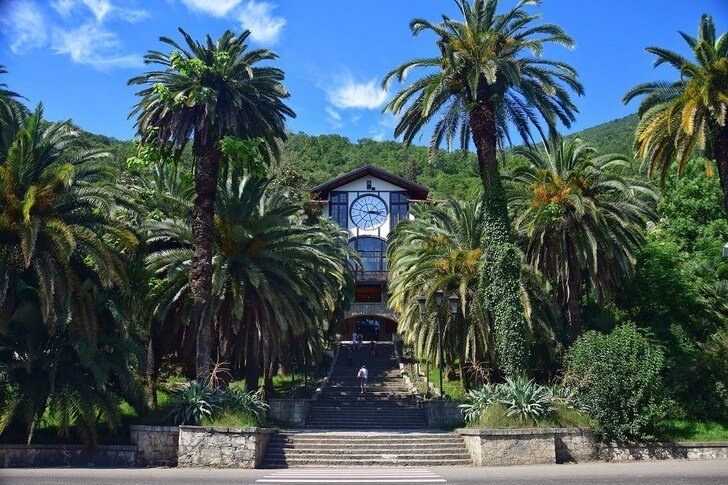
Cinema "Gagra"
The cinema is located on Primorsky Boulevard. Films were not shown here immediately, at first the building served as a winter theater. The building was built in the classical style: the entrance portico supports a slender row of columns, the symmetrical facade is decorated with laconic decor. At the moment, the building is abandoned, but from the outside it looks quite picturesque and even well-groomed.
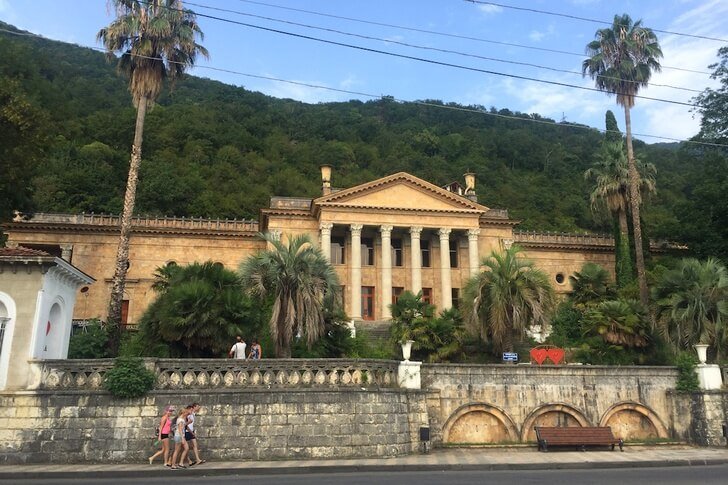
Railway station building
Passenger station, which in past years was one of the most popular in the country. The building was built in the middle of the 20th century, so everything that has been preserved, outside and inside, is the heritage of the USSR. The building is an example of the Soviet classical style: a monumental facade, columns, painted ceilings, massive chandeliers and arched enfilades. Today, the once majestic building is abandoned.
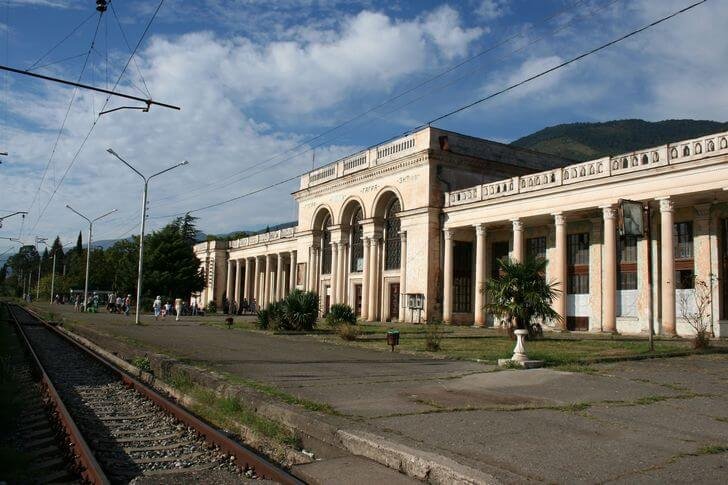
Abaata fortress
Construction of the Early Middle Ages, presumably built in the 5th-6th centuries. At different times, the bastion belonged to the Byzantines, Genoese, Russians - each owner made his own changes to its architectural appearance. In the 20th century, a hotel was built on the territory of the fortress. The remains of the fortress walls have survived to this day, the church of St. Hypatia Gagra, where the museum operates, and a hotel with a restaurant.
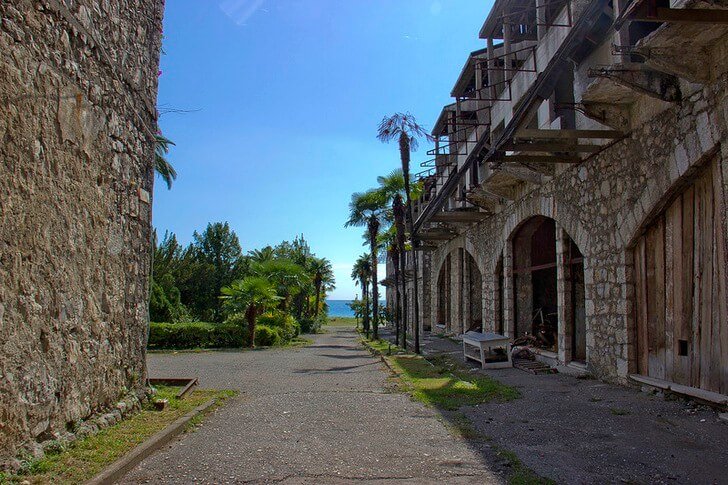
Church of Abaat
Church of St. Hypatia of Gagra is an active church, administered by the Abkhazian Orthodox Church. The building was erected in the VI century (according to another version - in the X century). It is an example of Byzantine architecture, or rather, its Caucasian interpretation, and is of great cultural value. The structure has powerful walls made of roughly hewn stone, narrow windows and a gable roof topped with a stone cross.
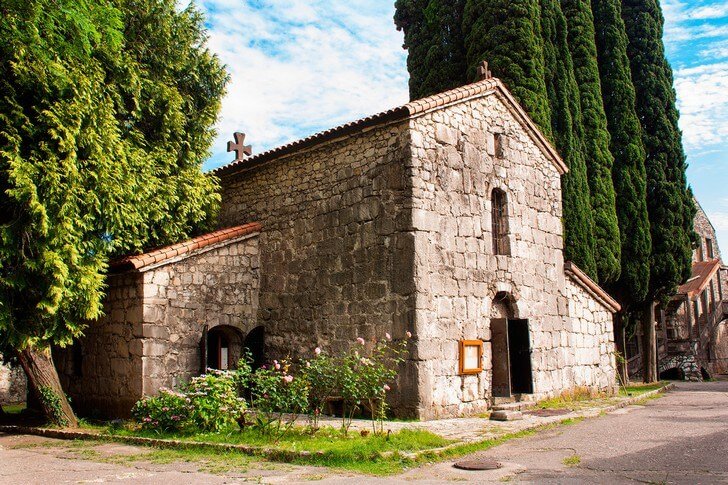
Tsandripsh Basilica
The building of the basilica was built in the VI century. It existed until the 16th century, after which it was partially destroyed by the Turks. It was not restored again. At the beginning of the 20th century, they tried to reconstruct the temple, but the plans remained on paper. During the Soviet era, archaeological excavations were repeatedly carried out on the territory. Only the ruins of the church have survived to this day. Sometimes services are held in the surviving walls of the basilica.
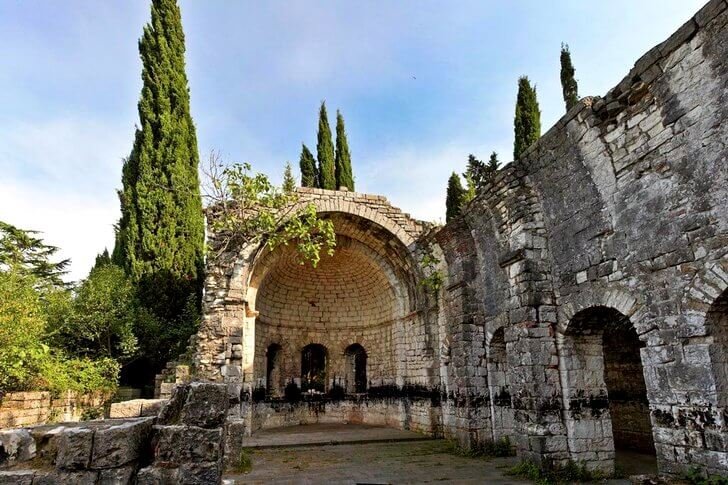
Reprua river
Reprua can be considered the shortest river in the world, as its length is only 18 meters. It is a small section of a powerful underground stream that comes to the surface just before flowing into the Black Sea. According to experts, the water in Reprua has the highest purity characteristics, so it can be safely used for drinking. According to the Abkhazian legend, the river was formed from the tears of three sisters who mourned their dead brother.
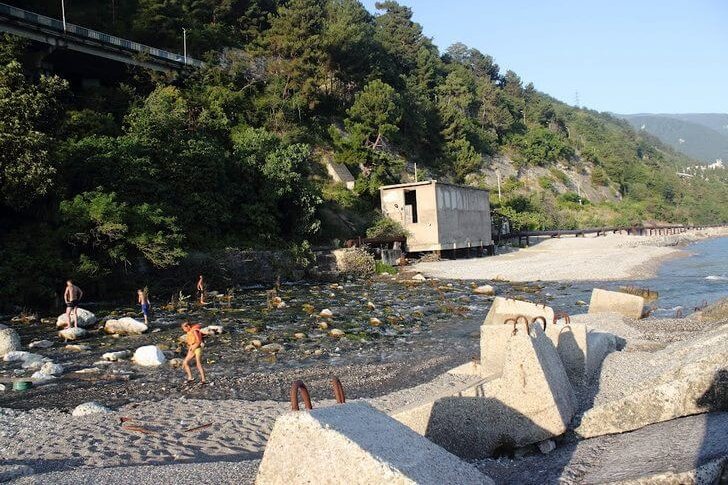
Zhoekvar gorge
The gorge begins in the western part of Gagra and stretches to the high-mountain source of the Joekvara River (translated from the Abkhaz - "12 springs"). This picturesque place is a wonderful ecological route for nature lovers, passing through boxwood, chestnut and yew groves and winding along a winding river bed. There are several boarding houses very close to the gorge, so tourists often come here for a walk.
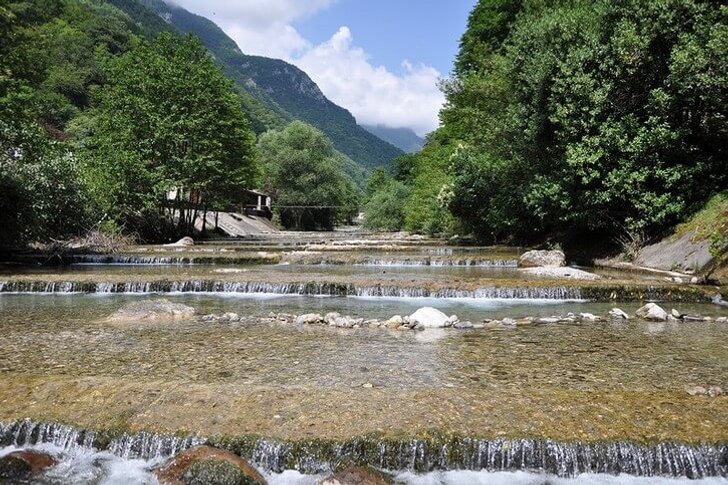
Mount Mamdzyshkha
The hill is located about 6 km from Gagra, it offers stunning views of the Black Sea coast, the Colchis lowland and the surrounding settlements. There are observation platforms on the mountain, where an asphalt road leads. In Soviet times, it was planned to build a full-fledged sanatorium and resort complex here and build ski slopes, but the plan could not be realized.

Lake Ritsa
When you think about Abkhazia, Lake Ritsa immediately comes to mind - perhaps one of the most popular sights of the country, sharing glory with the New Athos Monastery and the cave of the same name. The reservoir is located in the mountains at an altitude of about 1 km above sea level, a picturesque winding road leads to it, laid among the green slopes of the mountains. The lake looks especially expressive in autumn and winter, when the water acquires a pure blue hue.
